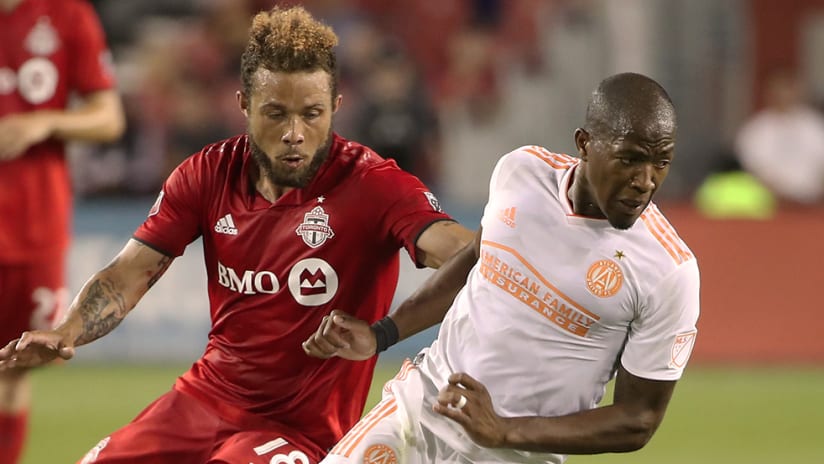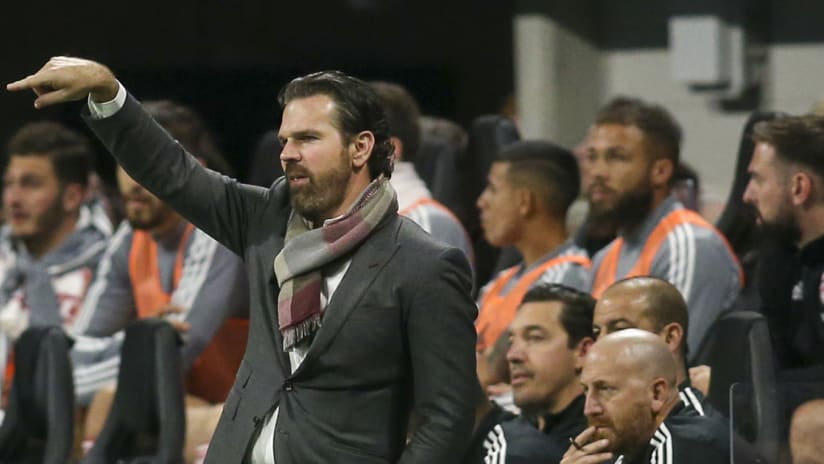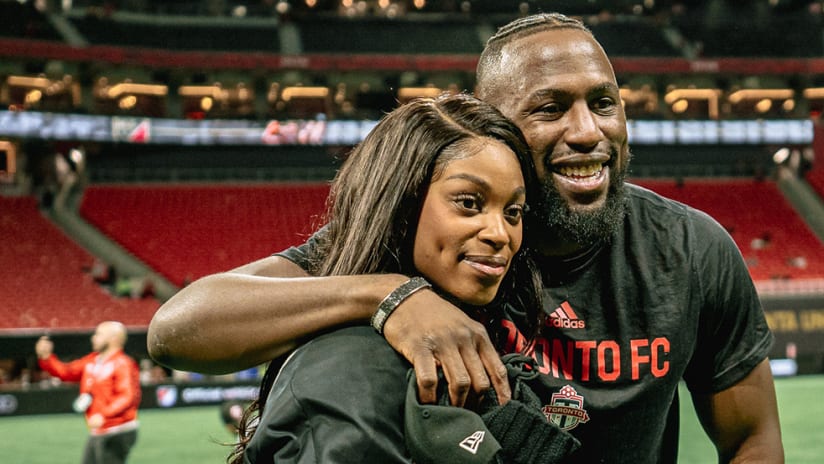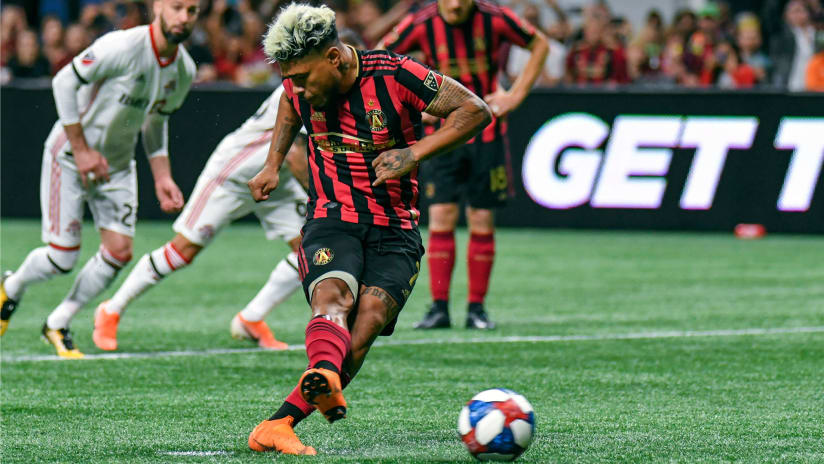We are in the Age of Transitions. The ability to go from Point A, winning the ball, to Point B. scoring the ball, is the dominant trait in soccer right now. It's true across the world, and it's true in Major League Soccer. When you blinked, transitions took the torch from possession (if we were to put a date on it, it was probably when Bayern Munich dismantled Barcelona in the 2013 UEFA Champions League semifinal). If you don't win the transition phases of the game, you probably won't win the game. See: Seattle's win over LAFC Tuesday night in the Western Conference Final. If you give talented players opportunities on the break, it's not a matter of IF, but HOW MANY.
The auxiliary to that, then, is the ability to stop transitions. If a team is naturally most vulnerable in the few seconds after it gives the ball away, and if teams are better than ever at attacking transitions, then being able to stop those transitions before they start is critical. When you lose the ball, are you prepared? Different cultures and teams have different words for this: Offensive Marking, Rest Defense, Attacking Defense. It's the most interesting team tactic in soccer right now. Partially for it's importance, but also for it's stage of development. In the hierarchy of soccer conversation, defensive transitions don't hold the same weight as, say, first touch or passing ability.
Slowly, though, that's changing. Here is Liverpool assistant coach Pepijn Lijnders talking about how offensive marking was the key to Liverpool's victory over Tottenham last weekend:
This is the trait that will determine Wednesday night's Eastern Conference Final between Atlanta United and Toronto FC (8 pm ET | FS1, FOX Deportes in US; TSN1/4, TVAS in Canada). Not the right foot of Julian Gressel or the head of Josef Martinez or the soft feet of Alejandro Pozuelo or the heart of Michael Bradley. It will be each team's focus off the ball when they are in possession.
The game is going to be open. Atlanta don't know how to play any other way at this point. They get the ball and go. Toronto, based on their performance at NYCFC last week, seem fine pressing and letting the field get stretched, too. It's a game that naturally sets up for end-to-end action.
On top of that, both teams have struggled with transition defending this year. It's the weakest part of Toronto's game; they send the outside backs forward and Bradley hasn't had the legs to cover the space. Atlanta, meanwhile, had to switch to three center backs to cover the space and have mostly relied on the pace of Miles Robinson (or the next-level ability to read the game from Michael Parkhurst) to bail them out. Of course they won't have Robinson on Wednesday night.
Both Atlanta and Toronto have taken the approach, "We trust attack more than we are worried about what you can do to us." It works in regular season. It becomes more problematic when both teams have the weapons to punish each other. There needs to be an evolution. It means the most important part of Wednesday night's game will be the offensive marking.
Two details:
- The defensive midfielders, Bradley and Jeff Larentowicz, will be key. They need to find the balance between presenting an option to receive a pass, while also staying close to the opposing attacking midfielder. Sometimes they will need to decide not to show for a pass because it's not worth it. It's a decision of percentages; the value added from getting the ball is less than the risk of letting Pozuelo or Ezequiel Barco pick up the ball in space.
- The center backs need to stay alert as their own team attacks. There's a human tendency to watch the ball, especially a goalscoring chance. The problem is, those attacks can go the other way awfully quick. If the center back watches his own striker shoot and loses the opposing striker, that lapse can lead to a goal on the other end seven seconds later. So while you watch the ball in the attacking third during the game, keep an eye on the defenders at midfield and how close they are to the opposition. Those interactions might be just as important.













